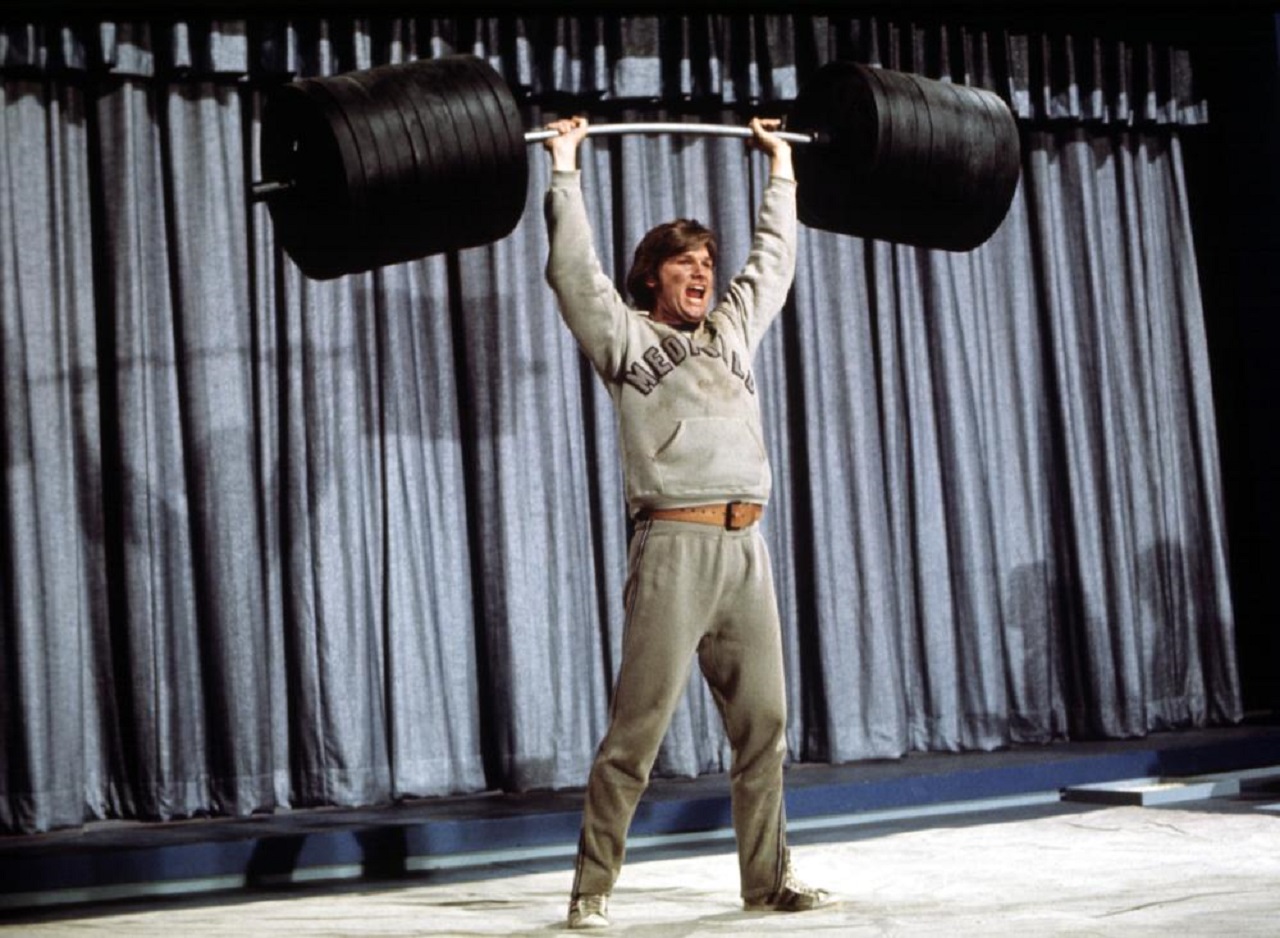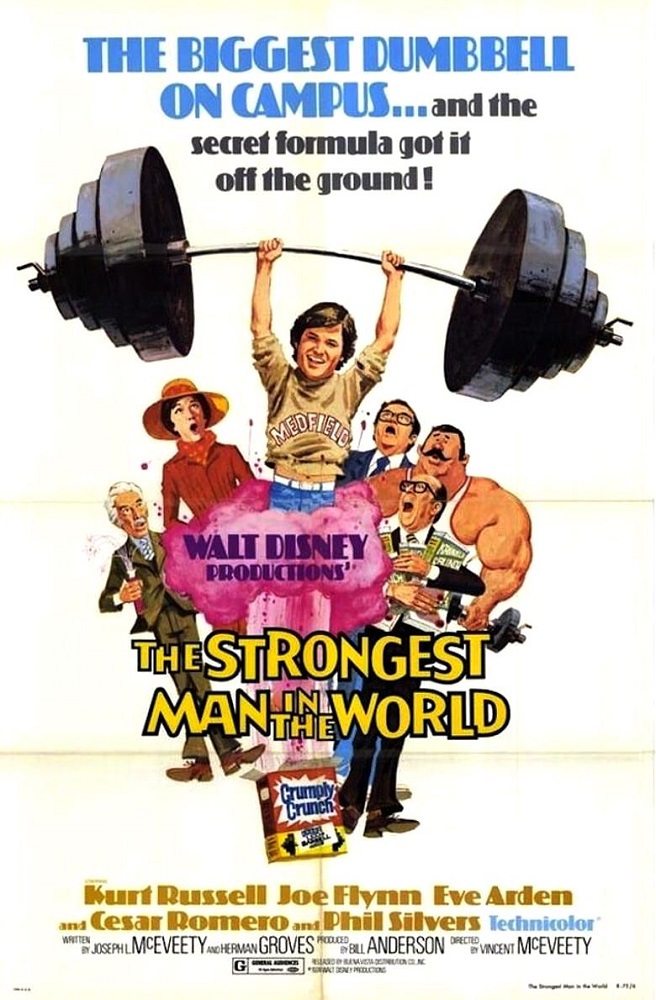Crew
Director – Vincent McEveety, Screenplay – Herman Groves & Joseph L. McEveety, Producer – Bill Anderson, Photography – Andrew Jackson, Music – Robert F. Brunner, Special Effects – Art Cruickshank & Danny Lee, Makeup – Robert J. Schiffer, Art Direction – John B. Mansbridge & Jack Senter. Production Company – Disney.
Cast
Kurt Russell (Dexter Reilly), Joe Flynn (Dean Higgins), Dick Van Patten (Harry), Cesar Romero (A. J. Arno), Dick Bakalyan (Cookie), Eve Arden (Harriet Crumply), Phil Silvers (Kurwood Krinkle), Michael McGreevey (Richard Schuyler), William Schallert (Professor Quigley)
Plot
The Medfield College board is about to fire Dean Higgins, claiming he has squandered expenses. He hastily promises big changes within thirty days. In the lab, Higgins accidentally spills a formula mixed by Dexter Reilly on some Crumbly Crunch cereal. All who eat the cereal then develop super-strength. Higgins becomes excited about the possibilities and persuades Crumbly Crunch to sponsor Medfield in a weight-lifting contest. However, Crumbly’s rival Krinkly Krisps are determined to stop them and hire A.J. Arno to find the secret of the formula.
The Strongest Man in the World was a disappointing end to the Dexter Reilly trilogy. Disney began the series with The Computer Wore Tennis Shoes (1969) and continued with Now You See Him, Now You Don’t (1972), all featuring Kurt Russell as a teen genius.
The Strongest Man in the World is a thoroughly drab entry in the series. Even the concept – a formula that makes people strong – fails to get one excited about anything. Some of the slapstick sequences capture the zaniness that infected the best of the Disney live-action comedies – images of Joe Flynn chopping boardroom tables in half and swinging from chandeliers, or the chase sequence at the end with Kurt Russell driving a Model T at high speed while it falls apart. On the other hand, sequences such as Cesar Romero and Dick Bakalyan’s attempts to break into the lab are woefully dull.

Mostly, The Strongest Man in the World is a shapeless mess that stumbles from one disconnected slapstick sequence to the next without any dramatic cohesion – Cesar Romero and bumbling sidekick emerge out of nowhere and take over the middle of the film in a series of abrasively shrill one-note performances, and Michael McGreevey, a fairly minor character at the start, for no apparent reason becomes the focus of a hypnotism and chase sequence and then subsequently disappears. Kurt Russell, the lynchpin of the previous films, is sidelined for almost the entire film – appearing only at the start to discover the drug and at the end to save the weight-lifting contest, not unlike a star making a cameo turn.
Vincent McEveety was a tv directer in a career that lasted from the 1960s to the 1990s where he turned out episodes of some classic shows including Gunsmoke (1955-75), The Untouchables (1969-63) and Star Trek (1966-9) and the original Cathy Lee Crosby pilot for Wonder Woman (1974), among others. McEveety directed a number of Disney films including The Million Dollar Duck (1971), Charley and the Angel (1973), Superdad (1973), The Castaway Cowboy (1974), Gus (1976), Treasure of Matecumba (1976), Herbie Goes to Monte Carlo (1977), The Apple Dumpling Gang Rides Again (1979) and Herbie Goes Bananas (1980).


